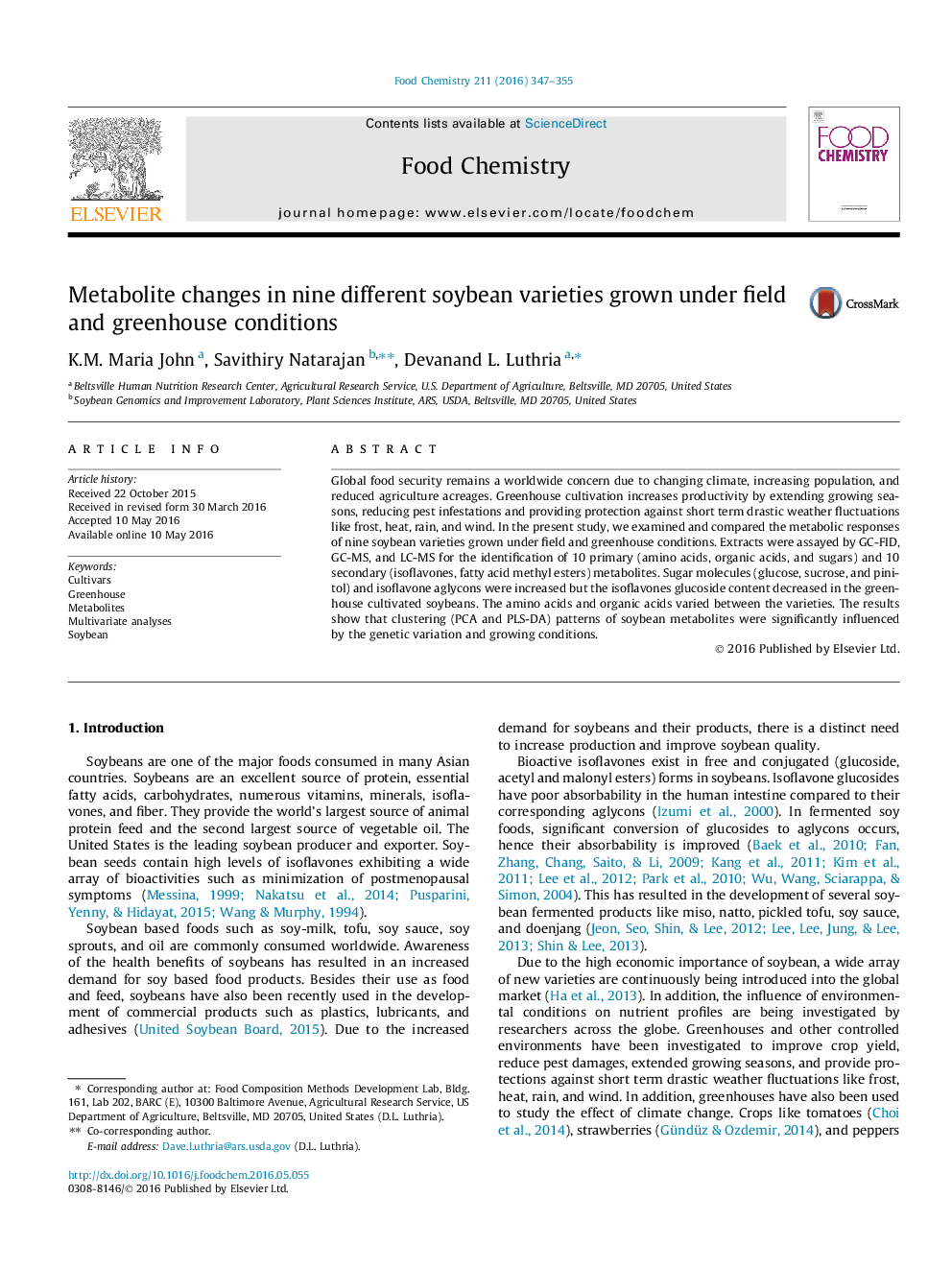| Article ID | Journal | Published Year | Pages | File Type |
|---|---|---|---|---|
| 7588034 | Food Chemistry | 2016 | 9 Pages |
Abstract
Global food security remains a worldwide concern due to changing climate, increasing population, and reduced agriculture acreages. Greenhouse cultivation increases productivity by extending growing seasons, reducing pest infestations and providing protection against short term drastic weather fluctuations like frost, heat, rain, and wind. In the present study, we examined and compared the metabolic responses of nine soybean varieties grown under field and greenhouse conditions. Extracts were assayed by GC-FID, GC-MS, and LC-MS for the identification of 10 primary (amino acids, organic acids, and sugars) and 10 secondary (isoflavones, fatty acid methyl esters) metabolites. Sugar molecules (glucose, sucrose, and pinitol) and isoflavone aglycons were increased but the isoflavones glucoside content decreased in the greenhouse cultivated soybeans. The amino acids and organic acids varied between the varieties. The results show that clustering (PCA and PLS-DA) patterns of soybean metabolites were significantly influenced by the genetic variation and growing conditions.
Related Topics
Physical Sciences and Engineering
Chemistry
Analytical Chemistry
Authors
K.M. Maria John, Savithiry Natarajan, Devanand L. Luthria,
